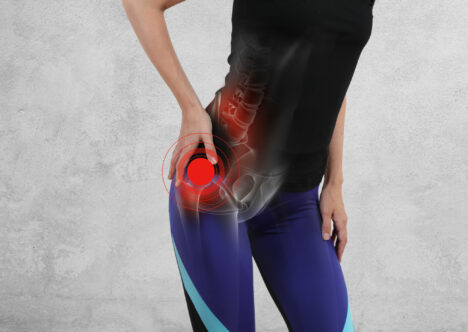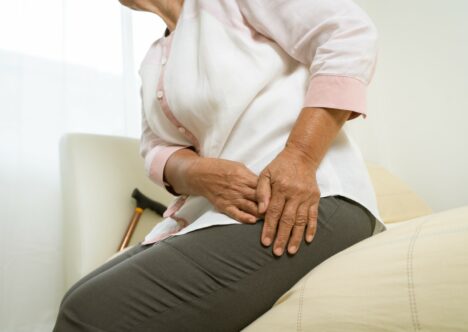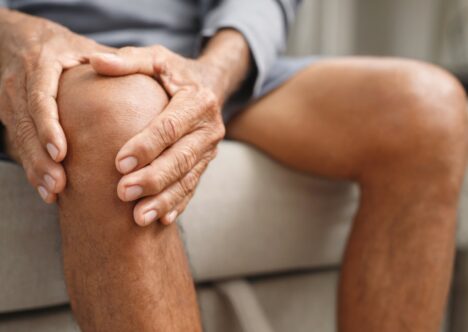Use our convenient online scheduler to book an appointment now.

Living With Chronic Pain When Surgery Isn’t an Option
Living with chronic pain can be an overwhelming experience. Unlike acute pain, which typically results from a specific injury or illness and tends to subside with time, chronic pain is an ongoing condition affecting millions. Surgery isn’t always an option for chronic pain sufferers, so exploring alternative approaches for managing and improving one’s chronic pain relief is vital. This blog will discuss the importance of living well with chronic pain and navigating this challenging journey.
Acute vs Chronic Pain

Acute Pain: Acute pain is typically sudden and often linked to a specific injury or illness. It serves as a protective mechanism, alerting the body to potential harm. Acute pain usually resolves as the underlying cause heals or with medical treatment. For example, a broken bone or a surgical incision may cause acute pain that diminishes as the injury or wound heals.
Chronic Pain: Chronic pain, on the other hand, persists over an extended period, often beyond the expected healing time of an injury or illness. It can last months or years and may have no identifiable cause. Chronic pain is a complex condition that various factors can influence, including changes in the nervous system, psychological components, and lifestyle factors. Fibromyalgia, rheumatoid arthritis, or neuropathy often lead to chronic pain.
Understanding the differences between acute and chronic pain is crucial because the approaches to managing and living with these two types of pain can vary significantly. While acute pain often has a clear path to resolution, chronic pain management focuses on long-term strategies. A holistic and multidisciplinary approach, including pain management specialists, physical therapists, and mental health support, is usually necessary.
The Power of Mindset
Living with chronic pain requires more than physical strength; it also demands a resilient mindset. How you perceive and cope with your pain is pivotal to your overall well-being. Research shows that chronic pain and depression often coexist, highlighting the significant impact of one’s mental state. Therefore, developing a positive and proactive mindset is essential for managing chronic pain.
- Mindfulness Meditation: Practicing mindfulness can help individuals better cope with chronic pain. Staying in the present moment and acknowledging pain without judgment makes it easier to detach from the suffering and cultivate a sense of acceptance.
- Cognitive Behavioral Therapy (CBT): CBT is a therapeutic approach that focuses on changing negative thought patterns and behaviors. It can help individuals with chronic pain develop more constructive and adaptive coping strategies.
- Support Groups: Joining support groups for chronic pain can be incredibly beneficial. Sharing experiences with others who understand your struggle can provide a sense of belonging, emotional support, and valuable insights into managing pain.
Avoiding Pain Triggers
Identifying and avoiding pain triggers is another vital aspect of chronic pain. Understanding that different individuals may have diverse triggers is important, so a personalized approach is key. Here are some general strategies for minimizing pain triggers:
- Identify Your Triggers: Keep a pain diary to record when your pain worsens or improves. This can help you identify specific activities, foods, or situations that trigger your pain.
- Ergonomics: Pay attention to your posture and the ergonomics of your workspace and home. Make necessary adjustments to reduce the strain on your body.
- Stress Reduction: Stress is a common pain trigger. Explore stress-reduction techniques such as yoga, deep-breathing exercises, and progressive muscle relaxation.
- Diet and Nutrition: Some chronic pain conditions are influenced by diet. Consult a healthcare professional or nutritionist to determine if specific foods contribute to your pain.
Living a Pain-Friendly Lifestyle
Chronic pain necessitates adjustments to your lifestyle. It may require giving up certain activities or incorporating new habits to support your well-being. Here are some lifestyle changes that can enhance your quality of life while living with chronic pain:
- Regular Exercise: A carefully tailored exercise routine can help alleviate pain and improve mobility. Consult a physical therapist or specialist to develop an exercise plan that suits your condition.
- Healthy Sleep Habits: Adequate sleep is crucial for managing pain. Ensure you have a comfortable mattress and create a sleep-conducive environment.
- Balanced Diet: A well-balanced diet can significantly impact your pain management. Incorporate anti-inflammatory foods and stay hydrated to reduce pain-related inflammation.
- Pacing Yourself: Learn to pace your activities throughout the day. Avoid overexertion and take breaks when necessary.
- Holistic Approaches: Consider alternative therapies such as acupuncture, chiropractic care, dry needling, or massage to complement your pain management plan.
Conclusion
Living with chronic pain is undoubtedly challenging but not an insurmountable obstacle. You can significantly improve your quality of life by developing a positive mindset, identifying and avoiding pain triggers, and making lifestyle adjustments. Remember that seeking professional help and connecting with support networks are crucial. Living with chronic pain may require adaptation, but it is possible to find relief, happiness, and a fulfilling life despite the challenges.
If you are battling chronic pain, request an appointment with one of our expert doctors who treat chronic pain at Town Center Orthopaedics to help you manage living with pain.
Join our Mailing List
TCO provides patients with orthopedic problems the trusted resources and patient-centered advice they need to “Feel Better. Move Better. Be Better.”
© 2024 Town Center Orthopaedics | All Rights Reserved


